County’s downtown building design fails to impress

Reporting and commentary by Robert Lynch; December 15, 2025
Around these parts these days every new building needs a catchy name. So if we want to assign a trendy title to Tompkins County’s proposed new Downtown Center of Government, let’s call it “The Lashes.” Because if built the way architects presented building plans to the public December 8, that’s what would catch every passerby’s attention as they approached the Buffalo and Tioga Street corner for decades to come.
Whatever those horizontal thingamabobs are cutting across each third-floor window on the eight-figure building’s corner facade—sun shades, ice shields, or just plain decoration—they resemble long, fake eyelashes and create the impression of prying peepers staring down upon all of us at street level. That’s scary.
Last Monday night’s county-sponsored Public Engagement Session, the third and final one of its kind, marked the first opportunity architects had to show off their handiwork, to present what they’d have us construct and pay for to consolidate many—although not all—Tompkins County government departments in a central location.
Beauty, of course, always rests in the eyes of the beholder. You may admire the initial design. I do not. To me, it should never have left the drawing table at Holt Architects’ West State Street offices or wherever it was sketched.
That said, you can erase a design easier than you can erase an attitude.
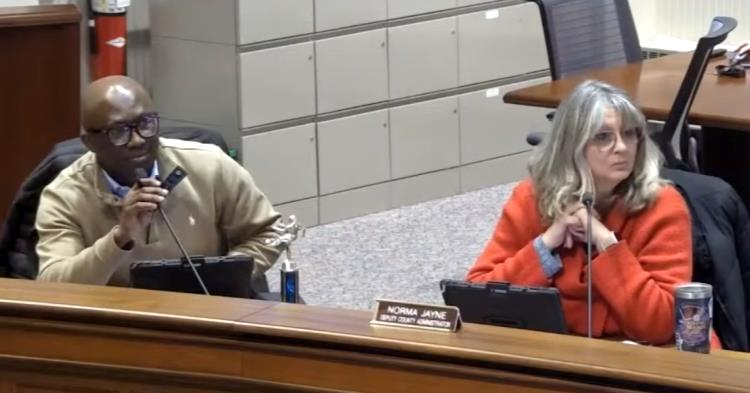
What happened one week ago in legislative chambers was not so much a demonstration of appearances as one of presumed outcomes. In certain places, and by certain people, it’s become gospel: The Center of Government must be built. It must be built in Downtown Ithaca. And it must be built the way County Administration wants it built.
Monday night was a cold one. The presentation played to a nearly empty gallery. Yet with the help of online visitors, it stretched to 90 minutes. County Administrator Korsah Akumfi introduced the event:
“Tonight represents an important milestone in a vision that has been more than twenty years in the making,” the Administrator proclaimed. “This meeting is an opportunity to gather your final comment, build qualitative endorsement, and make minor adjustments needed to move confidently towards a final design,” Akumfi added.
Minor adjustments? Final comment? A milestone vision? That may be County Administration’s view of where things stand. But it’s an opinion not shared by everyone.
“I will not vote for it; it’s a luxury” Newfield-Enfield’s legislator, Randy Brown, stated bluntly as he updated the Enfield Town Board on the Center of Government two nights later. “I think the project should be smaller and other locations can meet our needs efficiently with better access for the public and at a lower cost,” Brown wrote Enfield in a statement that accompanied his December 10 report.
What they’re proposing, “they’ll be living with for a long time,” Brown forewarned Newfield’s Town Board the next night, Thursday. “The County received various cost estimates for the Center of Government Building… and the cost estimates were above previously budgeted numbers,” the Newfield Legislator cautioned Enfield. “I am not surprised, and the Legislature is looking at all options before committing to this project,” Brown promised the Enfield Board.
Mind you, Randy Brown is not some contrarian, rogue back-bencher. Brown chairs the Legislature’s Downtown Facilities Special Committee, the panel actually charged with building the Center of Government.
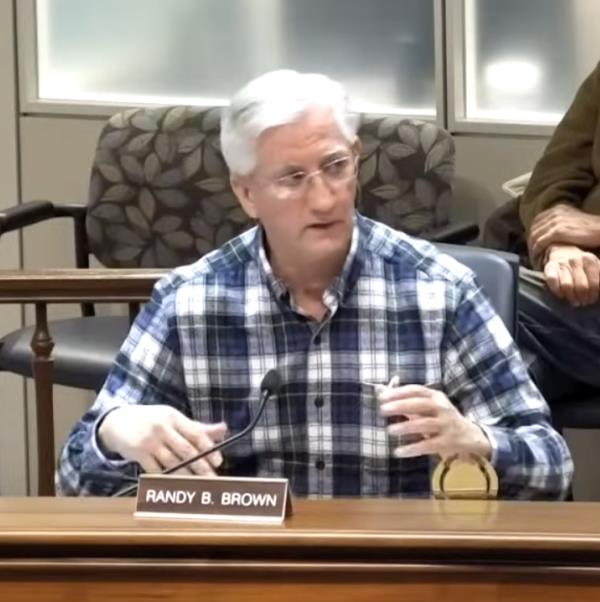
So juxtapose Korsah Akumfi’s visionary optimism with Randy Brown’s gut check. We’ve got a problem here. Nevertheless, the divergence would have eluded most casual observers at the rollout. You would have needed to slog through many months of legislative deliberations to gain true perspective and refused to accept County Administration’s gloss at face value. As much as money-sponging architects and overly-assertive bureaucratic brass would have you believe otherwise, the Downtown Center of Government is not necessarily going to happen.
Alternatives abound. Most recently, developers of Downtown Ithaca’s imperiled Harold’s Square have begged the Legislature at more than one meeting to lease or buy long-vacant office space in Harold Square’s 12-story high rise. They’ve pleaded to the point of desperation.
Before that, Tompkins Bank approached the County about its purchasing one or more buildings in the Cornell Business Park near the airport, ground leases upon which the bank had foreclosed. And then there’s always the Shops at Ithaca Mall, a place that’s fallen so far from grace these past 50 years that its south wing may convert into cubicles for you to store an old couch.
But as administrators see it, those alternative choices are now off the table.
“The new construction has the highest capital investment, but it also provides a purpose-built facility designed specifically for County functions,” Deputy County Administrator Norma Jayne began Administration’s supposedly objective comparison of a more expensive new building versus its three competing retrofits. New construction, she said, “ensures full accessibility and compliance with modern standards and it allows consolidation of operations in a true, one-stop governmental center.”
Please don’t fault Norma Jayne for any of this. Jayne’s halting, diffident delivery that night laid bare the truth that she was just reading a script. She hadn’t written it. And what Jayne read reflected not so much a study in search of a conclusion as a mind made-up in quest of a rationale.
Harold’s Square, Jayne recited, has “public accessibility” concerns, and parking there can’t be assured. Either the Cornell Business Park or the mall would “pull the government activity from the civic center and away from the existing county campus,” she said. (Yes, “civic center” has blossomed as a new buzzword phrase; one envisions a gymnasium.)
“It still is the overall conclusion that the new construction provides the strongest long-term value and the most predictable outcomes,” the Deputy Administrator’s hesitant, conclusory comparison ended. (Of course, a critic might counter that the “most predictable outcome” of a new building for you or for me would be higher taxes.)
Just eleven minutes into that evening’s hour-and-a-half rollout, Administration on its own accord had tossed aside any thought of going elsewhere. No, it insisted, we should move full speed ahead toward a new building. Administration’s overarching opening narrative tarnished whatever of the meeting remained.
Quay Thompson leads Holt Architects’ design team. Bernard Best is Holt’s project manager. Holt has good reason for making “The Lashes” happen. Last December legislators authorized a nearly $4 Million contract with Holt for “the planning, design and development of the Center of Government project.”

“We’re about halfway through the design in terms of the big schedule,” Thompson led off his presentation. “As we design more, things get harder and more expensive to change,” he cautioned. Yet “there’s still an opportunity to make adjustments and fine-tuning of the design,” Thompson assured.
Those words provide reassurance. Some of us would welcome many a change.
For starters there’s the façade. Plans call for stone of some sort at the corner entrance where Buffalo meets Tioga. But there’d then be a transition to brick on both sides. The aim, we were told, is for the appearance to blend in with the courthouse on Tioga and with the historic, 1865 Boardman House bordering DeWitt Park.
But brick and stone (or its synthetic substitute) can fight when put side by side. It looks like either you ran out of money or that a design committee couldn’t make up its mind. The latter explanation wouldn’t be far from the truth. Bernard Best drew guidance for the stone-to-brick merger from an online survey. Respondents liked one facing or the other, sometimes both.
“They liked the brick; they liked a little bit of the limestone at the entry ,” Best reported, “and that attractive mix that comes between that; breaking down the scale of the building.”
For those who might have expected something dramatic or award-winning, this ain’t it. Architects had once toyed with a gabled façade to complement the courthouse.. They rejected it. What’s before us now is just another flat-roofed box. It could have emerged from a Cornell second-year architecture class.
The Center of Government would stand four stories tall. Why there’d be no basement, no one’s adequately explained. But the Center’s top floor would be pulled back from the floors beneath it “so from street viewpoint it scales the building down much closer so it isn’t overpowering the Boardman House,” Best explained.

Still, withdrawing that top floor wastes a valuable ground footprint. Across DeWitt Park, developers of the Library Place apartments did the same thing, forced into it by historic preservationists. Library Place owners would later say the restriction impaired profitability.
Another thing: Designers would place the names of Tompkins County’s nine towns—in strict alphabetical order— atop each Center of Government window that faces a street. Some may call that creative; others tacky. But there’s already controversy. Someone emailed in to point out there’s both a Town and City of Ithaca. Sorry, the critic was told. The two “Ithaca’s” will have to share.
Administration’s vaunted PowerPoint had claimed that a (now) 59,000 square foot new Center of Government “meets all Legislative criteria.” No, it does not. One of those key criteria is parking availability. And a downtown center would meet the commuter test only if one expects employees and the public to keep plugging those increasingly costly City of Ithaca parking machines forever or trudge four or five blocks in every day from residential side streets.
“Employees are (to use) street parking, and we have a couple other lots that we’re looking at, someplace,” Thompson conceded, feebly attempting to tiptoe around the downtown building’s Achilles’ heel. The architect would later acknowledge that those “other lots” include City-managed garages, the ones that are often filled-up by hotel patrons.
And in the meeting’s most embarrassing moment, landscape architect Laura Seib of Fisher Associates found her homework absently undone when legislator Mike Lane quizzed her as to how many courthouse-adjacent employee parking slots the project would consume. Seib couldn’t say.
“I don’t have a set difference here and that is something that we can continue to refine,” the landscaper said, groping for an unknown answer. But one thing she knew: “Because of the increase in the number of people who would be on campus, even retaining all of the existing spaces wouldn’t come close to providing adequate parking for the employees who’d be in the new building,” Seib said.
Administrator Akumfi stepped in: “At the moment, the County doesn’t provide parking for visitors to any of the offices,” he sought to clarify. But Akumfi missed the point. It’s not so much about visitors as it is about employees. Already, the State Court’s system pre-empts many of the courthouse spaces.
And nothing may frustrate a county worker more than having to pay for the privilege to earn a paycheck. Legislator Shawna Black, attending remotely, gave voice to that frustration.

“I continue to have concerns about the parking situation for our employees,” Black advised the Administrator and the design team. “And I would ask that if and when we decide to pursue this location and this building, that we have a plan moving forward, because we have employees that come to work every day, and they shouldn’t have to walk halfway across town in order to get to work.”
In some ways, building architects have tripped over good sense to be dutiful stewards of a Green New Deal. The Center of Government would be framed in “heavy timber,” not structural steel. Crews would finish the building in that timber as well. The argument goes that trees capture and contain carbon, steel mills spew it out smokestacks. And cement plants do too. Toward a green goal, designers would build with wood and confine concrete only to the foundation.
Yet one wonders if any fire chief was ever consulted. Timbers burn. Steel and concrete do not. And one cannot forget the bedtime story piglet who built his house with sticks only to become a wolf’s ham sandwich.
Only about half of the Legislature’s 14 members attended the rollout meeting. Questions by them and from online visitors often drifted to minor stuff, straying from the bigger picture. Will the building have public bathrooms and a public water fountain bordering DeWitt Park, one legislator asked? Can Gadabout buses easily drop off their riders? Could the Boardman House tap into the planned geothermal heating system?
“I have a concern with too much white,” legislator Greg Mezey, remarked at one point. It can get “fading and dull and kind of grimy-looking over time,” he said. Mezey also requested a local artist paint a mural near the entrance. He also requested washable outside walls to more easily cleanse away graffiti. (Yes, it’s downtown.)
To some, the Tompkins County Downtown Center of Government has become a runaway train without brakes. Little by little, a point of no return creeps upon us. In November, legislators, but only after a long executive session, authorized spending $2.6 Million to remove the three buildings now resting on the Center of Government site. In early-June, those same legislators agreed in principle to fund up to $50 Million for the Center of Government project. At the time, some said what they had done stopped short of an irrevocable promise. Randy Brown was among last June’s four dissenters.

Over the decades, the Tompkins County Legislature has prided itself as sitting in government’s driver’s seat. Our county has no independently-elected County Executive, a top boss drawing power from a separately-defined constituency. In Tompkins County, in both tradition and by law, the County Administrator and his deputies are mere employees of the Legislature. They serve at the Legislature’s will.
But since he arrived here in January, imported from Schoharie County, a place where he may have managed a more deferential Board of Supervisors, Korsah Akumfi has exercised what some may see as an inordinate degree of executive authority when it comes to the Center of Government. Akumfi wants progress, not procrastination. The new Administrator’s driven resolve is why old buildings will soon be tumbling down and that new “Civic Center” may soon be rising.
Holt Architects’ timeline would put the Center of Government out to bid in September 2026. Construction would be finished by early 2029. The clock ticks.
If anyone—aside from legislator Randy Brown—pushes back on this $50 Million perilous venture, it’s the public at large. Zach Winn, a frequent speaker at Legislature meetings, voiced his criticism that cold December night.
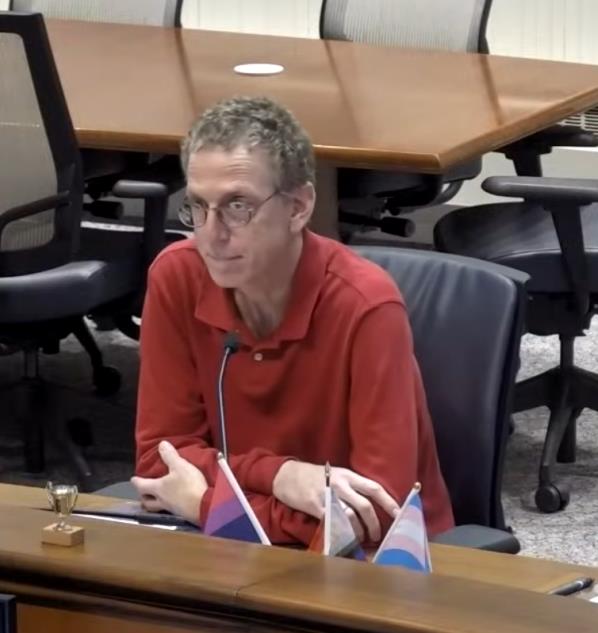
“I don’t think it’s a good idea to spend $50 Million on a new building,” Winn spoke from the gallery. “Who knows what that could balloon to by the time the project’s over,” he warned. Winn would prefer using Harold’s Square instead.
Ten minutes before everyone went home, Norma Jayne relayed another question from the chat box. “Shawna (Black) said if and when we do this option,” the questioner inquired. “I thought this was a done deal?”
Legislature Chair Dan Klein was handed this toughest-of-all questions to address.
“So we have authorized the project to continue forward,” Klein admitted. “And it is, but we have not put the money on the table yet.”
Greg Mezey interjected and Klein clarified. There’s $9 Million “in the bank” so far. The rest would need bonding.
And if the Randy Browns of Tompkins have their way, any more money will never reach the table. Unlike in some other places perhaps, Tompkins County’s legislators, not the Administrator, still run the show.
###
Brown’s Sudden Switch Codifies Tompkins CEDO
Equity Officer’s job gains permanence in close legislative vote
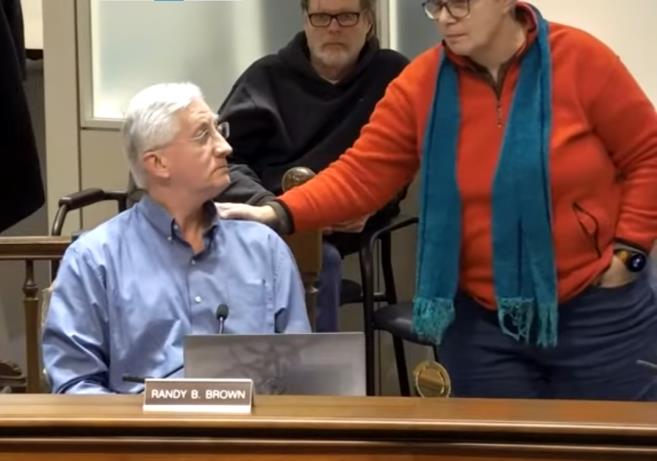
by Robert Lynch; December 6, 2025
In this age of Trump, one could argue the Tompkins County Legislature last Tuesday painted a big, blue bullseye on this community’s backside. Yes, it may have done so. And if it did, you can credit (or blame) Newfield-Enfield legislator Randy Brown for having brought the blue paint.
Because and only because Brown, a Republican, switched his vote from no to yes at the last minute did the Legislature muster the minimum eight votes it needed December 2 to elevate the job of Chief Equity and Diversity Officer (CEDO) to a permanent place within the Tompkins County Charter.
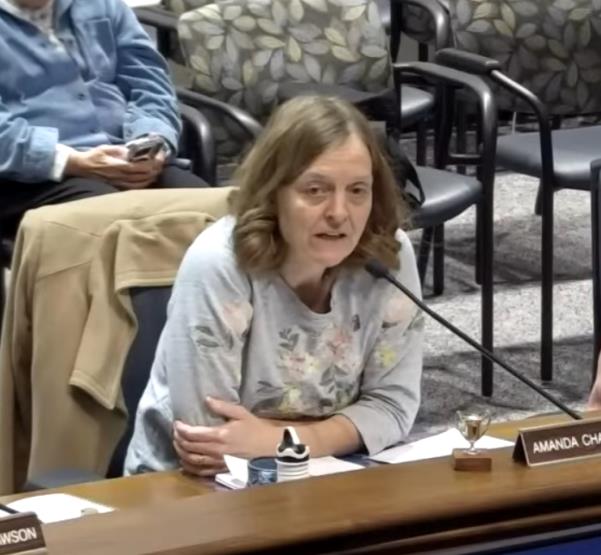
“If we want to say that Tompkins County believes in inclusion… if we want to continue backing up what we’re saying about having a diverse and equitable and strong workforce, we need to add this position to the charter,” Amanda Champion, Chair of the Government Operations Committee and prime sponsor of the charter-changing local law, advised colleagues as she brought the measure to the Legislature’s floor.
“The CEDO brings the tools and the knowhow and the training and the coaching and the listening and the policies to embed this into the way we do things,” legislator Veronica Pillar, like Champion, one of the body’s most activist liberals, echoed her fellow Democrat’s endorsement that night. “The CEDO is how we operationalize our values,” Pillar said.
On the one hand, the addition of a CEDO as a charter-bound administrator constitutes little more than window-dressing; symbolism over substance, a transparent tip of the hat to political correctness. But on the other hand, Tuesday’s action grants the equity officer an ongoing degree of institutional tenure. Future legislatures will find it next to impossible to eliminate the post should finances tighten or political winds shift.
The Tompkins County Legislature created the equity officer’s position in late-2019 and filled it the following year. The CEDO answers to the County Administrator. Two people have occupied the job since it was established. There was a long gap between when the first CEDO, Deanna Carrithers, departed in mid-2022 and when her successor, Charlene Holmes, took over in September 2023.
This past October, Holmes herself resigned, quietly exiting without disclosing her future plans. The position again remains open. Administrators hope to fill it in January. They reportedly have 25 applicants.
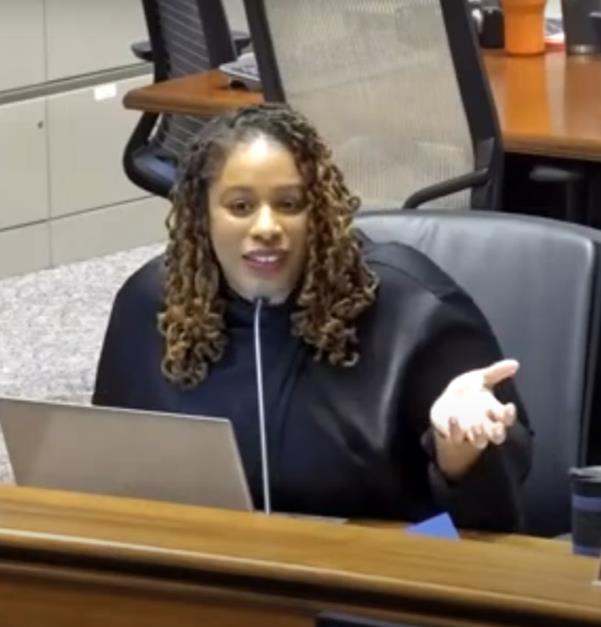
Chief equity officers stand as a rarity within county governments of our size. When Tompkins County’s legislators created the job six years ago, the only similar position in governments upstate, we were told, was in Buffalo.
Perhaps gun-shy to the likelihood of political pushback, few, if any, have called over this past half-decade for the CEDO position’s elimination. Yet some of the Legislature’s more conservative members have at times questioned the officer’s goals and initiatives; even the way the appointee chooses to write. Those subtle critiques drew from Enfield-Ulysses legislator Anne Koreman during Tuesday’s discussions an impassioned rebuke.
“There is more scrutiny over this position than any position that I’ve seen in my eight years (on the Legislature) and it is really upsetting to me,” Koreman told those beside her, her voice cracking with anger. “I don’t know how else to describe it except it’s a prejudice in itself, and we need to take a hard look at the scrutiny that we are putting on the person in this position,” Koreman counseled.
How Randy Brown came to change his planned vote against the CEDO position’s charter codification Tuesday could be viewed by some as one man’s surrender to racial and gender shaming.
As the hour-long legislative debate meandered toward a vote, the charter change’s supporters quietly counted noses, speculating how members would fall on the issue, even those who hadn’t spoken. Randy Brown had already telegraphed his intent to oppose. Supporters sensed they’d lose. They pleaded for at least one opponent to defect. At that point, Lansing’s Deborah Dawson brought out the heavy artillery.
“I don’t often find myself in my colleague’s camp chastising all the old white guys,” Dawson proclaimed, tapping Amanda Champion on the shoulder as she spoke, “But this is not going to look good if this vote comes down to women and our one man of color and our one gay white guy voting for it and everybody else going, ‘Oh, no; can’t do that.’ Think about it. Is that what you want? Is that how you want to be viewed?”
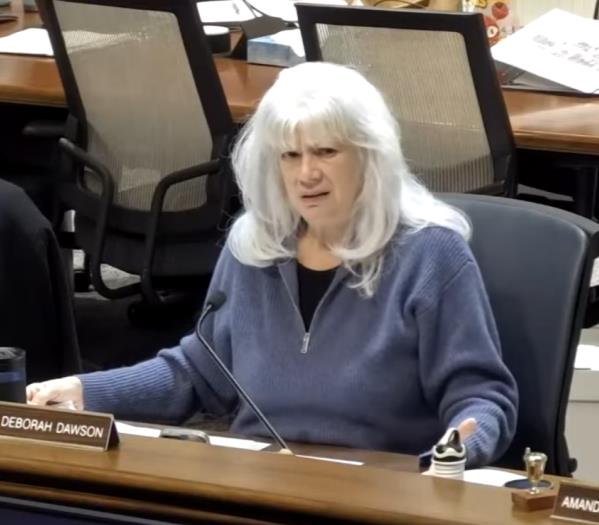
And yes, if you’re one of those who counts by race, gender, and sexual orientation, that’s what it would have looked like. Supporters Dawson, Koreman, Champion, Pillar, and Shawna Black are all female. Travis Brooks is black. Greg Mezey is gay. That’s seven votes, one short of the eight needed. All the remaining legislators are straight, white men and all had planned to vote no. (Dan Nolan wasn’t present. His Zoom link had cut out.)
No one budged. And then Randy Brown did.
“You know, I’m going to change my vote,” Brown announced. “I think it’s going to happen anyway next year,” the Newfield legislator predicted of codification, remarking at the time that he’s always thought of himself as a “mutt,” part Native American. Brown credited his native heritage for influencing his decisions.
If anything, the new, larger Legislature, set to be seated next month, may be more liberal than even the one at present. And it requires only a simple majority to change the charter. So Brown surmised that if the current body didn’t codify the CEDO position , the one that followed it likely would.
“I do think we do need to go through the charter and clean it up, without a doubt,” Brown added. Any significance to his switched vote he left understated.
Brown’s fellow Republicans, Mike Sigler and Lee Shurtleff, never spoke during the protracted, one-hour debate. Each would eventually vote against CEDO codification, as would Democrats Mike Lane, Rich John, and Legislature Chair Dan Klein.
And while Deborah Dawson had observed that a united straight white guy vote would send everyone the wrong message, Klein countered that assertion. He alleged that putting the CEDO into the charter would send its own toxic message, one not well received by power brokers elsewhere.
“The President has taken the stance that anywhere the term DEI appears it must be eliminated, and I do not agree with that stance,” Klein reminded legislators, reading from a prepared script. “However, I feel like some people here have taken the opposite position; anytime the term DEI appears, it is sacred and should not be examined or questioned or discussed, and I do not support that stance either,” the Chairman maintained.
“For me, I do not see any evidence that our Chief Equity and Diversity Officer position has improved any measure of diversity, equity or inclusion in our organization,” Klein insisted, the Chair rationalizing his opposition to placing the job of CEDO within the county charter.

From the visitor’s gallery at meeting’s start, eight supporters of the charter change spoke or wrote messages in support of the CEDO-inclusive local law. Those eight included several County employees and a couple of newly-elected future legislators.
Two more attendees spoke against the local law, including former Enfield resident and one-time town office seeker Amanda Kirchgessner. Kirchgessner expressed much the same position as Dan Klein later would. She recognized Washington’s new reality.
“We do not need to virtue signal through a hyper-localized tokenization process, especially given the retaliatory nature of the current federal administration,” Kirchgessner pleaded to County lawmakers. “We cannot afford to risk losing federal funding or getting involved in an expensive, lengthy lawsuit all because you want to put this into the books,” she maintained.
“I’m not opposed to equitable outcomes,” Kirchgessner qualified. “I am opposed to you putting us in substantial financial risk.”
Dryden’s Mike Lane stood among those legislators opposing CEDO codification. But it was the “straight white guy” insinuations that touched Lane’s nerve and prompted his reply.
“I don’t like what I’m hearing about this debate degenerating into subtle accusations of bias,” Lane commented. “I don’t think that’s the case. I think we’re better than that.”
The CEDO charter debate probably went on far longer than needed. But perhaps because it did, it left several dangling loose ends that never got retied.
First point: Codification’s advocates spoke of the significant support among the Tompkins County workforce for the CEDO position’s preservation. Employee support is important, of course, since its job duties remain primarily inward-focused, advancing equity interests in hiring and promotion. Dan Klein pushed back on any assertion of rank-and-file consensus.

Klein counted only five supportive employee messages. “That’s not a mandate to me,” Klein asserted, adding “And we know, legislators, that we have a bunch of employees that do not like what’s happened with this program. We’ve gotten our emails about that.”
Legislators about the big oval table challenged Klein on that point and maintained they hadn’t gotten those employee protests. The chairman begged off, claiming the emails were confidential and couldn’t be shared publicly.
Second point: When Deanna Carrithers was CEDO, back when the George Floyd-prompted demands for racial justice swept over America and locally, administrators delegated to Carrithers much of the Reimagining Public Safety initiative’s heavy-lifting. But Deanna’s successor, Charlene Holmes, transitioned her priorities and spent nearly two years compiling an “Institutionalizing Equity Report,” a 52-page, densely-worded document that oftentimes read like a doctoral thesis and played to mixed reviews locally.
For public consumption, both Carrithers and Holmes were well-liked. But behind closed doors, it may have been different.
“We’ve had two of them,” legislator Dawson referenced the successive CEDO’s. “One of them I liked very much. The other one I didn’t have much use for,” Dawson conceded, the two-term legislator allowing an ample amount of candor to spill in public view. “And there might have been a dispute between one of our CEDO’s and one of our other highly-placed department heads,” Dawson added. “That’s not the point. There’s always going to be differences of opinion and differences in the way people do a job.”
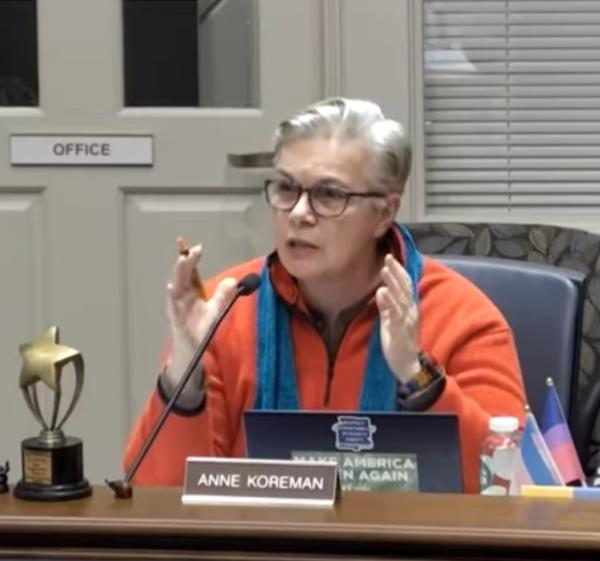
Dissect Dawson’s comment as you may. We do not know which Diversity Officer Dawson disliked, nor of which “highly-placed department head” was drawn into disagreement. We only know there was trouble and that it involved a personnel dispute of which we were never told.
Amanda Champion will leave the Tompkins County Legislature in a few weeks, retiring after two, four-year terms. In many ways, codifying the Chief Equity Officer could be her way to cement a legacy.
During these past five years, no one has dared—at least, not publicly—to eliminate the Chief Equity and Diversity Officer’s job, even though doing so could save local taxpayers a salary listed for 2025 at $110,593, plus benefits.
What’s more, the CEDO’s elevation to its placement within the county charter seems a relatively recent leap of mental inspiration. Champion told colleagues the idea emerged from her attending a Government Alliance on Race and Equity (GARE) conference a couple months ago.
But whether spontaneous or long-contemplated, the CEDO job is now engrained within the charter. It was put there by majority vote. It could be extracted the same way. Just don’t expect it ever to be pulled.
And what about the danger that the equity officer’s newly-granted institutional prominence could subject Tompkins County to fresh trouble from Pennsylvania Avenue? Deborah Dawson doesn’t plan to worry.
“We’ve already got a big target on her back,” the Lansing Democrat advised skeptics that early-December night. “I just don’t think that adding the CEDO to our charter is going to make the target on our back any bigger than it already is… You know, come and get us.”
###
Taller, Stronger, and Also Plain Ugly
$88M NYSEG FLAIR powerline draws concern from Enfield, Newfield Boards; neighbors

by Robert Lynch; December 4, 2025
It is aging infrastructure older than most of us. We’ve taken it for granted; long accepted it for what it is.
But if the power company has its way, that wooden nonagenarian on stilts will soon die a quiet, unheralded death and vanish from the landscape to usher in its 21st Century replacement; a bolder, taller-standing offspring set to strut its copper-brown steel self across the rural landscape of Enfield’s southwestern corner and Newfield’s northern edge. Some call it progress. Others hate it. They’d prefer that the old, wooden granddaddy live on forever.
“It’s a terrible idea,” Enfield Town Planning Board member Rich Teeter opined at the Planning Board’s November fifth meeting. “They’ll be ruttin’ all over on the land. I don’t like it. I like stuff the same, and they’re changing it, and I guess I don’t have a choice.”
The “they” to whom Teeter referred is New York State Electric and Gas Corporation, NYSEG. And the “it” is NYSEG’s “FLAIR” project, the utility’s fast-tracked $88 Million rebuild of a 21-mile transmission line (#982) that links two large power substations, one in Montour Falls, and the other on Ithaca’s South Hill.

Pending grant of a “Certificate of Environmental Compatibility and Public Need,” an application now before the New York State Public Service Commission (PSC), the FLAIR endeavor would dismantle a long stretch of 91-year old, tandem wooden poles that drape their transmission conductors side-by-side within a 100-foot wide right-of-way. The current wires hang beneath an “H-frame” wooden configuration. NYSEG would replace the 1930-era H-frames with far-taller, brown, steel monopoles, supports that would attach wires to their sides.
Each gray wooden pole rises only 30 to 60 feet above ground. The steel monopoles, although fewer in number, would anchor in concrete and elevate from 74 to 122 feet. A NYSEG manager, speaking to Enfield officials, struck the average height at 88 feet.
“The existing line is over 91 years old and the asset condition is poor,” Emma Timerman, Project Manager for the FLAIR initiative, defended the replacement during a presentation to the Enfield Town Board November 12, a session that came one week after Enfield planners had given the company’s plans their initial look.
“These structures are made of wood and have been there for almost a century,” Timerman explained. “So you’ve got several generations of woodpeckers that have made their homes here.”
But a closer look readily confirms that our friendly, foreign-based utility has more on its mind than just deterring the unlikely prospect that poles will rot and drop their wires. Eighty-eight Million doesn’t get spent without a better purpose. The newly-rebuilt line would handle far more energy, NYSEG admits. The FLAIR cables would carry more than 2.5 times as much current of do the lines they would replace.
FLAIR would “remove bottlenecks to the local transmission system,” Timerman explained. “We’re trying to meet New York State energy goals, and we’ve got to put more power through these lines,” the manager advised the Enfield Town Board.

“FLAIR,” is an acronym probably conceived by some well-compensated, PR-savvy NYSEG marketing consultant. It stands for the “Finger Lakes Area Infrastructure Reliability” Project. PSC documents indicate that the utility first filed for the agency’s approval in December of last year. NYSEG’s timetable calls for a final PSC decision by the second quarter of 2026. Construction would start in early-2027, with the new lines completed and energized two years thereafter.
To their (supposed) credit, NYSEG and the PSC have purportedly fulfilled all legal obligations to notify municipal stakeholders, to post public notices, and to invite citizen comment. Nevertheless, the line replacement ingeniously for almost a year found a way to evade municipal and media scrutiny.
No news stories on FLAIR have yet found their way to the local press. An advisory letter that NYSEG supposedly provided to Enfield’s Town Supervisor last spring never got shared with other Town Board members or with constituents. The PSC held its obligatory Public Hearing October 8 in Montour Falls. The agency’s Administrative Law Judge kept the session open for half an hour that day, encouraging someone to speak. The hearing transcript reveals that no one offered testimony.
Only in November, slightly less than three months before the PSC’s January 29 deadline for written comments, did FLAIR generate serious public attention. And when it did, it certainly did.
More than a dozen residents turned out for the Newfield Town Board’s monthly meeting November 20. Neighbors living near the NYSEG line and its right-of-way criticized FLAIR and ate up more than an hour of a session which Newfield customarily keeps succinct and to the point, but which this time dragged to until nearly Ten O’clock. Critics took frequent aim at the monopoles’ proposed height and how they might obstruct view of residents’ surroundings.
“I have one of the double wooden, electrical thingies in my backyard,” Cynthia Henderson of Millard Hill Road told the Newfield Board, Henderson referring to the poles standing there now, “which means it might end up being replaced by that gigantic monstrosity that they’re talking about putting up,” she surmised. “And it’s going to affect, possibly affect my property value and potentially cause some health issues. So, I’m quite against it, and I’m very concerned.”
“My whole life, I’ve dreamed of having my house on a hill with a scenic view,” 24-year old Kirsten Hamburg, a new homeowner on Douglas Road, informed the Town Board. “These aged poles were a concession for me, but I was fine with it because it blends in with the tree line. I cannot handle a ginormous pole in my backyard,” Hamburg complained.
“And I’m very concerned, because… I got no notice of this project,” Hamburg insisted. “I got no letter, I got no email. I got no phone call…. I did not get any notice of this project until I received a paper on my mother’s door last week that this is going on.”
That paper on the door was likely put there by Ann Brown or her son, Shaun. Mother and son spent days canvassing the neighborhoods of northern Newfield; knocking on doors, telling residents about the project, and leaving flyers if no one was at home. Credit the Browns not only for waking up those living near them, but also for first informing Enfield Board members of the incipient controversy.

“As you may or may not be aware, NYSEG is currently seeking Article VII approval for replacing their 115 kV transmission line (line 982) that runs from Montour Falls to south of Ithaca,” Shaun Brown emailed the Enfield Town Board on the first Sunday of November.
Concerning the nearly 100 foot monopole that NYSEG proposes, Brown critiqued. “A structure this tall is overkill for a 115kV transmission line, indicating that in years to come NYSEG will seek to increase the voltage and right-of-way.”
Three days after receiving Brown’s email, and at this Town Councilperson, Robert Lynch’s, request, the Enfield Planning Board took up the FLAIR project, yet issued no formal recommendation. One week later, the Enfield Town Board gave FLAIR its own look.
By a pair of 4-0 votes, the Enfield Town Board agreed to enter the ongoing PSC FLAIR deliberations as a “Party of Interest” and also to designate this Councilperson, Lynch, as its ”municipal representative and liaison” in the matter. On behalf of Enfield, electronic paperwork was filed November 17.
“I don’t think it does any harm,” this Councilperson advised the Town Board before it cast its final November vote. “I think it’s something we should do just to protect the Town of Enfield’s interests.”

“This Town Board believes NYSEG in its PSC filings has failed to justify the need for this transmission line replacement,” Enfield’s adopted resolution to join negotiations stated, in part, adding “this Board believes that the higher metal structures FLAIR proposes would impose glaring visual impediments inconsistent with the text of… this Town’s Comprehensive Plan.”
The Enfield resolution also raised potential health hazards associated with electromagnetic energy, risks stemming from the increased current-carrying capacity of the new lines. Even though NYSEG submissions to the PSC purportedly affirm the company’s compliance with regulatory standards, the Enfield and Newfield discussions raised doubts, including about the safety of the line that already exists.
“I have in the past traveled that driveway under those 130 kilovolt lines,” a driveway leading to a constituent’s private residence, this Councilperson advised the Enfield Board in November. “And after I have done that and been at that residence for a while, I feel ill.”
“Being that proximate to it may be like standing in a microwave,” this writer related his sensation.
Joining the PSC review process does not obligate Enfield to file legal pleadings, retain counsel, or spend money, even though it could should it choose to do so. Instead, involvement will ensure that if NYSEG or anyone else pleads for or against the FLAIR project, Enfield officials will receive timely notice.
So far, the Newfield Town Board has not followed the same path. It has not formally joined the PSC proceeding. Yet Newfield Supervisor Michael Allinger signaled near the end of the November 20 meeting that Newfield will likely draft a formal comment, adopt it as a resolution, and forward it to the PSC by the agency’s late-January deadline.
Newfield has also announced plans for a second discussion of the FLAIR project at its next meeting, Thursday, December 11. NYSEG representatives will attend. Further Town Board action could follow.
That said, one’s actually stopping the FLAIR powerline replacement, although not impossible, could prove for any homeowner—or group of homeowners—a daunting challenge.

“I think it’s very unlikely that they’re going to stop this project,” Thomas Smith, Attorney for the Town of Newfield, advised during the November 20 meeting. “But I think that it’s also very unlikely that there’s not going to be a compensation element for landowners whose value is diminished as a result of the project.”
“So we lose,” one unidentified woman responded from the gallery in frustration.
Nevertheless, the prospect of landowner compensation could provide with it a small amount of solace. And for Supervisor Allinger, urging monetary rewards could become part of his town’s strategy.
“If we can draft a resolution of support to, for either compensation or movement of these structures so that they’re not obstructing any current easements, I’d like to make that one of three action items that we could possibly do,” Allinger told Board members. The Supervisor would also like more information through Tompkins County Government to help identify exact pole placement.
“So, on the one hand, I’m hearing from constituents all the time about why are we getting so many blackouts?” Allinger acknowledged. “And it’s because of the infrastructure. So the infrastructure’s clearly needed. Nobody’s going to argue that. But what can we do as a town to support the people that are going to be affected by these poles going up in their yard, even though they have the easements?”
Somebody, most likely a NYSEG representative and most likely at that Montour Falls public hearing (for which the official record is bare) described for Newfield’s Ann Brown the FLAIR right-of-way as just “Billy Goat Country.” For those who tossed that comment around the room November 20, it didn’t sit well.
“And I took offense to that, because Newfield’s not Billy Goat Country,” Ann Brown protested. “We are prospering; we have seen real estate come in, new houses being built. On my road alone, there are two new businesses.”
“It’s important that it’s not Billy Goat Country,” Cynthia Henderson concurred. “Really, it is beautiful out here, and I love my neighbors. “
Sunny View Drive’s Carolyn Clark added, “But we’re not a Billy Goat trail, with people coming from all other parts of the world to a very beautiful place. We want to keep it that way.”

Whether or not Billy goats wander that 21-mile, 100-foot wide right-of-way west from the Coddington Substation on Ithaca’s East King Road to Montour Falls remains an open question. But that a lot of angry people live along that corridor too remains far more certain. In Enfield, it’s only a residence or two, plus Rich Teeter’s Teets and Son scrap yard that intrude close to the lines. But in Newfield, many more live within sight of them. People have grown accustomed to what’s there now. They fear what lies ahead.
“So, where are they gonna put this monstrous power pole? James Martin, owner of land he hopes to build upon at 306 Millard Hill Road, asked. “What is it going to do to our, our view of, you know, city lights, our coming out and looking at stars?” Martin continued to question, “And you’re considering people coming to camp with us, you know, building a house. Where we want to put our home is, could be greatly impacted, and maybe not even possible should that large power pole exist.”
And, of course, there’s always a second shoe that could drop. What if once NYSEG built the higher, more hefty line, it added a second trio of wires or another string of those ugly metal monopoles? What if the visual blight and the electromagnetic danger were compounded? That question came up in Enfield.
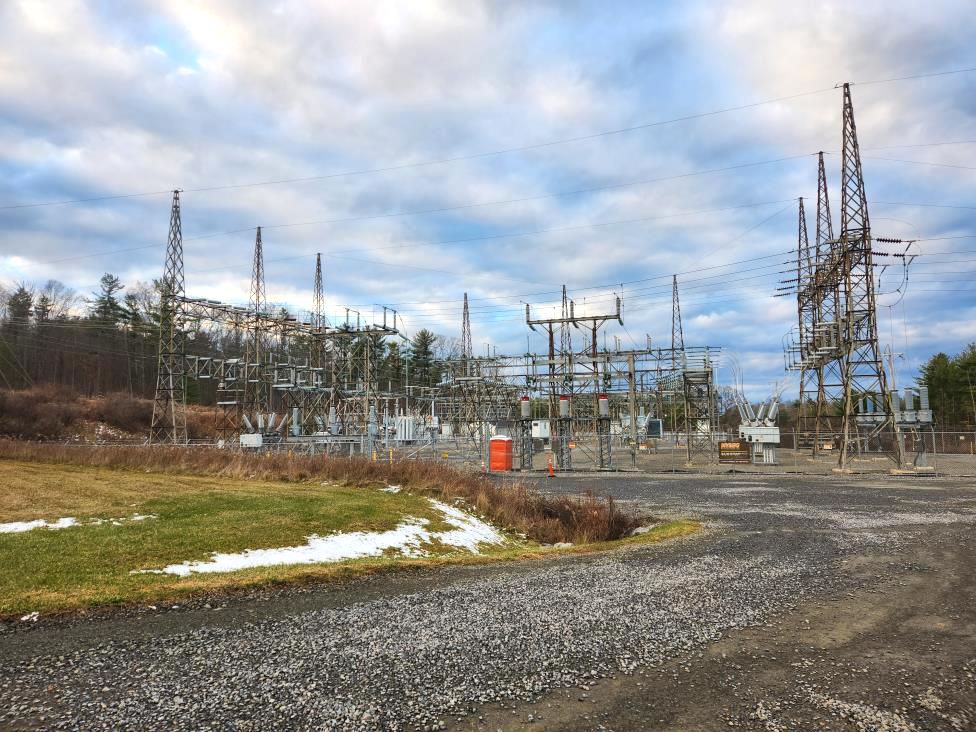
“Could it put additional poles to either side of that that’s being proposed now to increase the carrying capacity in that right-of-way?” this Councilperson asked NYSEG’s Timerman at the November 12 meeting.
“Potentially?” Timerman responded hesitantly, apparently caught off guard. “This is my project. I can’t say in the future. Maybe?”
And that perceived evasiveness; that “never-mind, we’re NYSEG” attitude bothers more than just one of us.
“I love my property. I love where I live. I pinch myself every day that this is like a vacation home with my views,” Margaret Hamburg of Douglas Road told the Newfield meeting. Of the monopoles, she evaluated, “It’s gonna, it’s very devastating for us, 100%.”
And of how this has all come down, Hamburg’s opinion: “I think it’s been very sneaky on NYSEG. It’s been, it’s been backdoor.”
###
Posted Previously:
News Desert Defiance
Tompkins Legislature “cancels” The Ithaca Journal; adopts ’26 budget
By Robert Lynch; November 21, 2025
Times change. But laws sometimes do not. And because of an archaic state statute likely kept in place only by lobbyists, the Tompkins County Legislature may need to eat its defiant words of Tuesday night and designate The Ithaca Journal as its official newspaper again for next year.

Any such renewal would come only grudgingly. And November 18, it didn’t come at all. With only two in support and 12 opposed, the County Legislature denied the Gannett daily its perennial perch, a privilege that carries with it the paper’s unchallenged right to take taxpayer money for publishing legal notices at whatever price it sets.
Additionally at the mid-November meeting, the Legislature revised and then adopted its 2026 County Budget. It also debated, but then delayed action on whether to request from New York State a one percent increase in its Hotel Occupancy Tax.
In voting down The Journal’s designation, Tompkins legislators followed through on a threat they’d made in years past, yet never quite found the courage to invoke. Choosing a newspaper normally becomes perfunctory housekeeping. But as they cast The Journal aside Tuesday night, lawmakers complained about the shrinking tabloid’s dwindling subscriber base, its inflated price, and impliedly its lack of local reporting.
“I think we all understand our right to protest,” Dryden’s Greg Mezey, leader of Tuesday’s anti-Journal rebellion, made clear. “I think sometimes as a lower level of government, we need to rise up and use our voice and our platform to encourage the state to move more swiftly.”
Where Mezey would like Albany to swiftly run is to amend its laws so as to permit local governments to publish legal notices in online news outlets like The Ithaca Voice, or in print-internet hybrids like Tompkins Weekly or The Ithaca Times.
Current New York rules forbid such freedom. Statutory definitions confine official newspapers to daily publications of general circulation published within the community. By that standard, only The Ithaca Journal qualifies here.

And in legislators’ eyes, that paper squanders its monopolistic privilege; taking advertising dollars and giving nothing in return. The Ithaca Journal may still have an Ithaca newsroom, but there’s seldom anyone there. The paper is now edited and printed in Johnson City, as are other Gannett papers serving the region. Journal reporters long ago stopped covering local politics, including meetings of the Tompkins County Legislature.
The legacy paper’s enviable status rankles Matt Butler, Editor-in-Chief of The Ithaca Voice. Butler took the mic during floor privileges at Tuesday’s meeting and urged lawmakers to consider his employer’s struggling digital platform as a better choice.
“Every organization in Tompkins County is doing more for local news than Gannett is through The Ithaca Journal,” Butler insisted. “I don’t think that it’s appropriate or smart to keep sending Gannett money just to pay rent on an empty office, or more likely honestly to just reallocate the money elsewhere where they deem the news more important for people to receive.”
Numbers tell the story. And they tell a story of The Ithaca Journal’s tumble from dominance. In 2017, the paper, then well on its retreat, had 8,809 subscribers, Mezey reported. That number has since shrunk to under 2,000, Legislature Chair Dan Klein said he’d learned.
Meanwhile, The Ithaca Voice, legislators were told, receives far more local hits. It gets 400,000 site visits per month, boasts more than 7,300 daily newsletter subscribers, and reportedly had 1.1 million active visits between January and September of this year.
The Ithaca Voice is free. But The Ithaca Journal’s getting pricy. Emaciated as it is, the daily paper costs $2.00 a copy. Teaser rates aside, print and online combination subscriptions can cost more than $90 per month, legislators were told. That can approach or surpass $1,000 in a year.
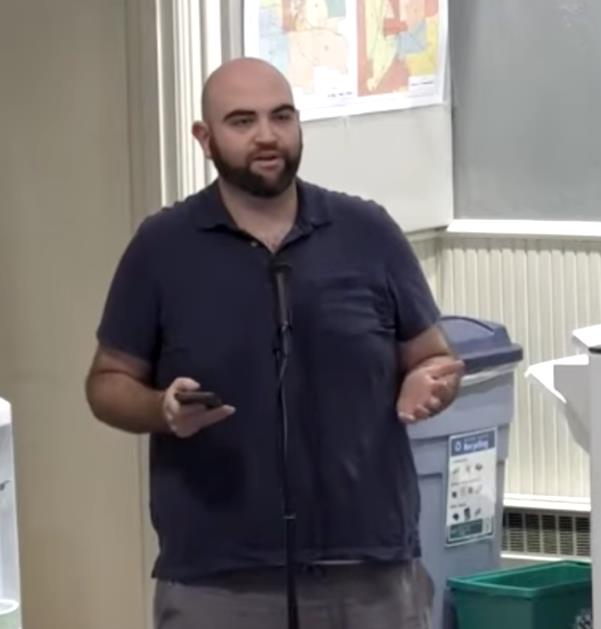
“If we want to talk about how we get our message and our publications and our notices out to the largest possible audience, this is the way,” Mezey asserted, praising a digital alternative. “An antiquated method of print news that doesn’t care about our community, is not the way to do that,” Mezey stated.
“The point of a public notice is actually to spread the word, to make the public aware of something,” Butler reminded lawmakers. Those needing to be informed are “not going to the publication for the public notices,” he reasoned. “They’re going there for the local news, and if that publication isn’t providing local news, there’s not going to be anyone there.”
But the law is an ass, they say. And despite best efforts locally, nobody seems capable of convincing state legislators to revise a section of the nit-picky “General Construction Law” that mandates governments post legal notices using the time-honored permanence of printer’s ink emplaced upon something perhaps perused today, yet tomorrow employed to wrap fish.
“This is just a leftover linguistic appendage,” Mezey said of the law’s decaying dictate. “It’s just hanging out there, and it should be cut out at the root, and we need to think differently how we notify our public, because this is not the way,” Mezey said of what the state insists always need be done.
After Mezey spoke those words, Mike Sigler clanged his drinking glass from across the room. It rang like a cowbell. The Lansing Republican, who sells billboard advertising for a living, has been railing against—and voting against—The Journal’s privileged designation year after year.
Dryden’s Mike Lane has also complained in the past about how low Ithaca’s once-great newspaper has sunk. Although he voted against official designation in committee, Lane joined Legislature Chair Klein to support the resolution in Tuesday’s final vote. Lane cautioned his was only a “reluctant yes.”
“I think we have to have a paper whether we like it or not, for now,” Lane counseled.
The Legislature’s Clerk, Katrina McCloy, concurred. She said the Secretary of State demands she notify his office of the designation by year’s end.
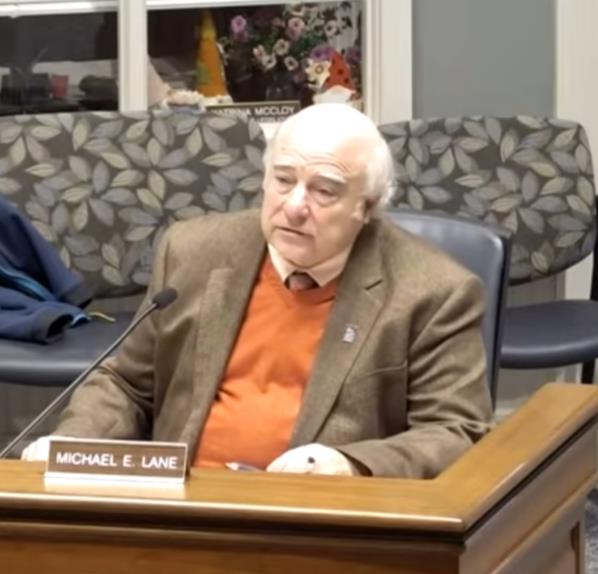
Two years ago when it tackled newspaper affirmation, the Tompkins County Legislature coupled its designation with unanimous endorsement of a then-proposed state resolution that would have broadened publication options to include certain online outlets under tightly-defined rules.
“These bills would permit this body to publish notices with other local newspapers with an online presence, increasing access to public information and supporting more local journalism,” the locally-passed legislative endorsement stated.
Yet even on the night the local legislature passed its 2023 recommendation, the sponsoring committee’s chair conceded defeat. According to the meeting’s minutes, Assemblymember Anna Kelles had advised the committee chair that “the resolution was determined to be not moving forward.” Later reporting would suggest that intense pressure from the print industry had spiked the reform initiative.
A January 2024 recommendation by the Enfield Town Board had urged similar reform. The online option “would likely save the Town considerable resources and provide the Town Clerk added flexibility in scheduling those notices’ publication,” the Enfield recommendation had stated.
In the nearly two years since then, Albany leaders have done nothing further to anyone’s knowledge.
So to remain legal, expect the Tompkins County Legislature at its next meeting in December to resurrect the issue, re-designate The Journal, but also accompany its action with an emphatic pleading Greg Mezey plans to write.
We need to “send a very strong letter to our state representatives and demand action on their part because it’s unacceptable,” Mezey stated in deriding the status quo.
Among other business, a final 2026 Tompkins County Budget emerged from the November 18 meeting. The Legislature adopted it unanimously, the first time that’s happened in years.
Most often, the final budget vote warrants only a footnote, since legislators have already performed most of their heavy lifting during a long string of budget meetings that begin shortly after Labor Day.
Yet last Tuesday’s final tinkering proved more extensive than usual. Adjustments consumed more than an hour of debate and a series of votes. And while the changes ticked up the tax levy a bit, they still contained that levy within the calculated 3.59 percent New York State-recommended tax cap.
“I’m not a big fan of this budget,” Lansing’s Mike Sigler conceded, because “the taxes go up,” he said. But “this to me is a bit of reckoning for us,” he added, “because assessments for a long time have floated us as a county, and it seems that this year that has not happened, and I don’t expect that will happen going forward.”

“Things cost more, and that’s the reality,” Greg Mezey acknowledged. In some years, Mezey votes against the budget. This year he supported it.
“I believe that this budget balances the most urgent needs of our residents and sustains the vital services whether it’s above or below the tax cap, and as it is I will support it,” Groton’s Lee Shurtleff stated.
In their final-meeting juggling of budget numbers, legislators cut to $280,000 an earlier-planned half-Million dollar subsidy to Tompkins Consolidated Area Transit (TCAT). The reduction followed Cornell University’s late decision to fund an equal $280,000 TCAT subsidy compared to the meager $31,000 Cornell had first proposed.
But for Tompkins County, those budget savings became short-lived. In a series of votes, legislators allocated $191,550 to support a trio of programs. One of the appropriations directs $58,590 into OAR (Opportunities, Alternatives, and Resources), an agency assisting the formerly incarcerated. OAR beneficiaries’ passionate appeals dominated a September 30 County Budget Forum. Another last-minute appropriation will support a program to provide mammograms to low income Ithaca residents.
And in a final move that pushed up the levy to match the tax cap, lawmakers funneled another $150,000 into their contingent fund. The levy increase as the meeting started was 3.37 percent. By meeting’s end, the levy was up nearly 3.6 percent.
Left for another day—if it ever survives that long—is a controversial initiative to raise Tompkins County’s Hotel Room Occupancy Tax from five to six percent. The idea would require state legislative approval next year. The hotel tax request had drawn divided votes in two local legislative committees, having failed in one of them. And after heated debate Tuesday, the full Legislature sent the idea back to committee where it could very likely die.
“Our visitor data is showing that our visitation is down,” Peggy Coleman, President of the Tompkins County Chamber of Commerce, cautioned legislators at the meeting’s start. International visitation year-to-year is down by 52 percent. The Canadian portion of that metric is down a full 72 percent.
“From a leisure travel perspective, this is really not a good time to increase taxes to create more expense to folks as they’re trying to manage the expenses of everything else in their lives,” Coleman warned.

But some on the Legislature, including Lansing’s Mike Sigler, Dryden’s Mike Lane, and Newfield-Enfield’s Randy Brown, would target the projected $800,000 in newfound revenue from the one percent increase to shore up revenues at the Ithaca-Tompkins Airport. The local airport struggled—and failed—in this most recent budget cycle to win increased taxpayer subsidies that might hold enplanement fees down and entice new airlines to establish routes here.
“We have very few opportunities to increase revenues,” Brown said. “And I think this is something that would help regular taxpayers here.”
“This is our version of Saturday parking,” Greg Mezey countered, the Dryden lawmaker taking a snarky swipe at the City of Ithaca’s recent moves of desperation to fill a seven-figure budget gap. “Let’s throw something at the wall, and maybe we’ll figure it out later,” Mezey sarcastically told colleagues.
“I absolutely do not support this,” Mezey continued, blasting the hotel tax proposal. “We have absolutely no plan for this money; absolutely no plan for this money! Why would we levy a tax with no plan?” Mezey stridently asked.
True, for our county merely to request permission from the state would not necessarily compel the tax’s later imposition, lawmakers were advised. Yet some would prefer Tompkins County ditch the idea here and now.
“Regardless of what the reasons are for the decline in our tourism, there is a principle that when you’re in a hole, you don’t keep digging,” Deborah Dawson advised. “And to make it more expensive to come here when people aren’t coming here,” Dawson said, “is the equivalent to me of digging.”
The hotel room tax measure went back to committee by a nine-to-five vote. Whether it will ever exit that committee and return to the legislative floor, only time will tell.
###
Fossil fuel heating ban on hold as Enfield Board speaks out
by Robert Lynch; November 14, 2025
Governor Kathy Hochul didn’t want to do it. But the courts gave her little choice. A gubernatorial-backed New York law and building code update that would ban the installation of fossil fuel-fired furnaces and gas cooking stoves in most new Empire State homes won’t take effect New Year’s Eve as Hochul and state lawmakers had hoped.

Attorneys for the Governor’s Department of State and industry plaintiffs who’d challenged the New York prohibition entered a stipulation Wednesday in Federal District Court suspending the New York prohibition pending appeal of a federal lawsuit.
The stipulation would likely postpone implementation of New York’s All Electric Buildings Act well into 2026, if not longer.
Meanwhile, unrelated to the pending litigation, the Enfield Town Board, during its meeting October 22, adopted a resolution urging Hochul to delay the law’s implementation on grounds that the local electric grid lacks capacity to handle the load a rapid transition to heat pump technology would require.
“The Enfield Town Board welcomes the intelligent, aspirational transition to renewable energy sources for home heating and associated energy applications, yet also recognizes the infrastructure limitations that currently impede total electrification efforts in rural communities such as its own,” the Town Board’s request for a gubernatorial intervention stated.
Enfield’s late-October action—taken at a session otherwise called to hear public testimony and vote on the Town’s 2026 Budget— followed an initiative advanced earlier that month by a Cortland County community to thwart the all-electric heating and cooking mandate.
The Cincinnatus Town Board’s resolution took a different path than did Enfield’s. Cincinnatus supported a federal bill that would override New York’s mandate. Enfield lawmakers chose not to embrace the Republican-sponsored federal legislation.
“I’m not going to give up my gas stove,” Gray Road’s Cortney Bailey asserted during floor privileges at the start of the Enfield Board’s October 22 meeting. ”At least when the power goes out for five days when my son was five or six, I could still cook without having power. (Bailey’s son is now grown.)
As for the All Electric Buildings Act, “I think that’s very harmful for our area,” Bailey said. “I honestly think that they’re thinking everybody lives in the damned city.”
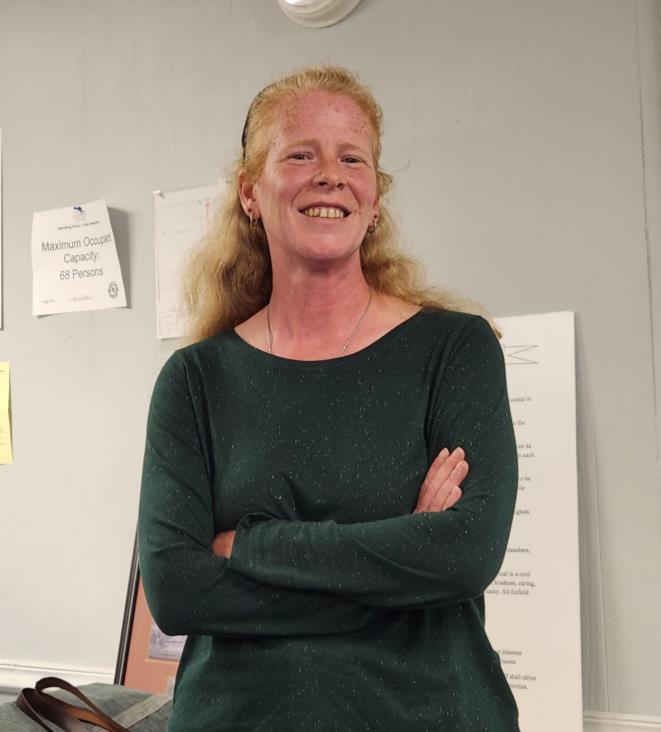
“There’s been a lot of talk about this, and it’s scary,” this writer, Councilperson Robert Lynch, author of the Enfield resolution, advised the Town Board that night. “I’m all for heat pumps; we have them in this building,” he said of the Enfield Courthouse, where the Town Board meets. “And if people want them, that’s fine, but I don’t think we should force people to have them.”
The All Electric Buildings Act, long-sought by New York’s environmental activists, was one of those measures snuck into a mammoth budget authorization bill in the spring of 2023, a bill so big that footnotes that chip away at personal freedom become hard to spot and evade the news cycle.
Under what’s now Section 11-104 of the New York Energy Law’s “Energy Conservation Construction Code,” the 2023 law advises us that “to support the goal of zero on-site greenhouse gas emissions and help achieve the state’s clean energy and climate agenda… the code shall prohibit the installation of fossil-fuel equipment and building systems, in any new building not more than seven stories in height… on or after December thirty-first, two thousand twenty-five.”
The seven-story threshold would, of course, conveniently carve out a temporary waiver for developers of commercial high-rises. Builders of large commercial and industrial buildings gained a similar reprieve. Yet the code would nonetheless require all newly-built structures, either tall or short, large or small, to comply with the fossil-free mandate beginning in 2029.
As currently enacted, the All Electric Buildings Act would affect only new construction, not existing homes or commercial buildings. Yet some fear regulatory creep: Once the camel of the nanny state gets its head inside the tent of your basement or kitchen, some among us worry runaway regulation could extend itself downward to homeowner replacement furnaces and range-tops as well.
As always, what Albany legislators and their green-building allies find so easy to enact in the dead of a legislative night years ahead of a deadline can come back to bite them when that deadline actually looms large. To that point, media reports indicate that as many as nine moderate Assembly Democrats had signed a letter in October asking Governor Hochul to roll back the statewide mandate. Hochul remains adamant that the new law take hold as soon as legally possible.
But it was the courts, not legislators that succeeded in imposing this latest postponement.
In October 2023, the National Association of Home Builders, the National Propane Gas Association, and various energy and construction trade groups banded together and sued the state in federal court. The petitioners, including current lead plaintiff, Mulhern Gas Company, Inc., claimed that New York State had overstepped the bounds of federal authority when Albany unilaterally imposed the fossil fuel construction ban. The plaintiffs claimed federal statute pre-empts the state’s actions.

The federal district court for the Northern District of New York upheld New York’s new codes last July 23. But the plaintiffs appealed their case to the United States Court of Appeals, Second Circuit. The parties’ stipulation of November 12 stays imposition of the fossil fuel building ban until the Second Circuit can rule on the appeal. And it would extend the stay for 120 additional days beyond the decision.
Whichever side lost the appeal could then petition further to the U.S. Supreme Court. And the stay would similarly block implementation until after the High Court rendered its decision.
Had the parties not agreed to delay the law’s effective date, the district court would have acted on the petitioners’ motion to enjoin New York from implementing key portions of its Energy Law.
In accepting the stipulation and delaying implementation, plaintiffs and the state made clear that this is an action dictated by procedure, not substance.
“The stipulation and order shall not in any manner be construed as determinative of the issues or claims raised in this action or any other proceeding of any kind and shall have no precedential value,” the latest court filing stated.
Appeals take time. They can take a long time. If Mulhern v. Mosley—Walter Mosley is New York’s Secretary of State—were to go all the way to the Supreme Court, one could see the All Electric Buildings Act being sidelined well into 2027.
Contacted by reporters, a spokesperson for Governor Hochul expressed disappointment that the ban on new fossil fuel installations won’t take effect this New Year’s Eve, as was planned.
“The Governor remains committed to the all-electric-buildings law and believes this action will help the State defend it, as well as reduce regulatory uncertainty for developers during this period of litigation,” Ken Lovett, the governor’s senior communications advisor for energy and environment, emailed multiple news outlets concerning the appeal. “Governor Hochul remains resolved to providing more affordable, reliable, and sustainable energy for New Yorkers,” Lovett added.
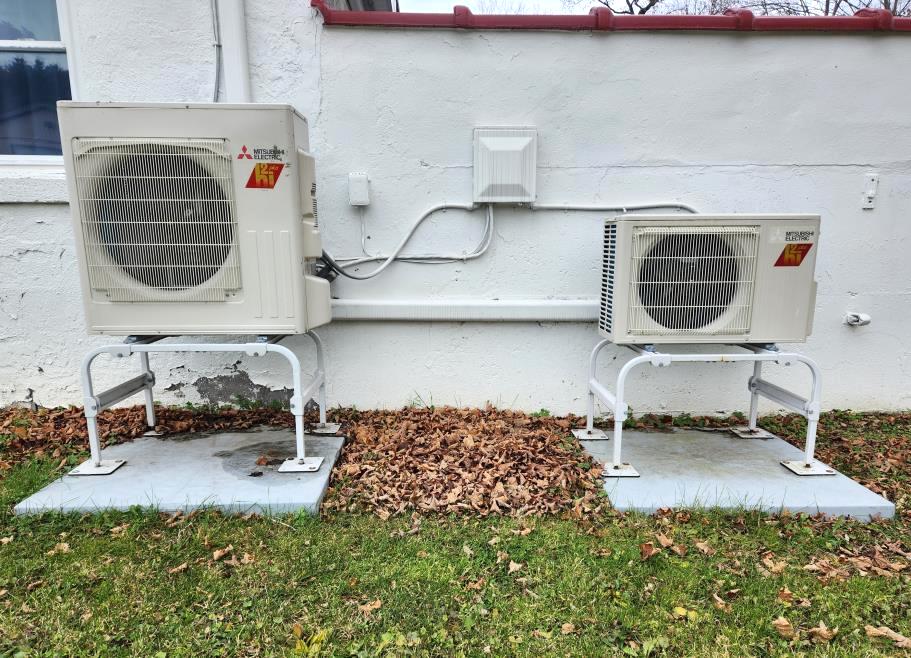
Yet some environmental activists and their legislative allies have cried foul, maintaining in recent days that the governor’s latest action reflects a softening of her environmental policy; the third of three recent walk-backs, one of them paving the way toward crypto mining on Seneca Lake.
In urging Governor Hochul to wield her executive power and delay the heat pump-friendly laws until electric grids can handle the load and homebuilders can fathom the curtailment of their liberty, the Enfield Town Board last month walked somewhat cautiously. The Town Board urged regulatory restraint, yet jettisoned a portion of a draft resolution that would have endorsed a Republican Congressional initiative, named the “Energy Choice Act.” It’s a bill that would pre-empt New York’s prohibition more broadly.
The Energy Choice Act is the brainchild of New York representative Nick Langworthy and West Virginia Senator Jim Justice. Congressman Langworthy represents much of the western Southern Tier and south Buffalo regions that Ithaca’s former Congressman, Tom Reed, once represented.
Whereas the Mulhern group of plaintiffs must argue in court a case of federal preemption that’s ambiguous and nuanced, the Langworthy-Justice legislation imposes a firmer hand:
“A State or local government, or instrumentality or regulatory agency thereof, may not adopt, implement, or enforce a law, regulation, ordinance, building code, standard, or policy that prohibits or limits, or has the effect of directly or indirectly prohibiting or limiting the connection, reconnection, modification, installation, transportation, distribution, expansion, or access to an energy service based on the type or source of energy that is sold in interstate commerce to be delivered to an end-user of such energy service,” Congressman Langworthy’s bill would unapologetically order. Senator Justice’s bill carries identical language.
“I’m generally OK with this,” Councilperson Jude Lemke said of the initially-drafted Enfield resolution, “but I’m not OK with the provisions of the Energy Choice Act,” Lemke added. “It’s very broad, and I’m not sure that it is a good idea.”
Endorsement of the Langworthy-Justice bill was the cornerstone of the Cincinnatus Town Board’s October 14 resolution, passed unanimously, that launched the opening salvo of municipal resistance to the All Electric Buildings Act. The Cortland County town’s resolution gained statewide attention. It prompted Enfield to follow suit.
“The Town Board urges Congress to pass the Energy Choice Act to defend consumer choice, protect energy affordability, and preserve reliable access to natural gas for all New Yorkers,” the Cincinnatus resolution stated.

Following Cincinnatus’ lead, this Enfield Councilperson, Robert Lynch, drew upon its language in drafting Enfield’s “Resolution to Support Freedom of Homeowner Energy Choice.” To gain unanimous support from others, this Councilperson deleted the paragraph to which Lemke objected, the federal bill’s endorsement. Instead, the Enfield board inserted a sentence that Lemke had recommended:
“Resolved, that this Town Board urges Governor Hochul and the New York State Legislature to develop policies that result in diverse sources of energy to help residents obtain cost effective energy while continuing to expand renewable energy sources within the State over time,” Councilperson Lemke’s amendment stated.
But despite deference to compromise, the local resolution remained adamant that “the Enfield Town Board urges Governor Hochul to exercise her executive authority to whatever extent permissible and suspend the impending implementation of the New York State Energy Code’s prohibitions on the installation of fossil fuel equipment and building systems for new construction, prohibitions that would otherwise take effect on December 31, 2025.”
“I get calls in the 24 hours of the power going out,” Enfield Supervisor Stephanie Redmond told the Town Board at the October meeting, speaking as the board headed toward a vote. “People are desperate,” Redmond reported, “and I always urge people to have backup for their backup for their backup.” The Supervisor said she urges residents have a backup generator, backup heat, and a wood stove.
Stephanie Redmond, by choice, lives in a home off-grid.
The Cincinnatus resolution scripted its advocacy on the presumptive ability of new homeowners to tap into natural gas. But not one natural gas pipe intrudes into Enfield. And none may ever do so should the All Electric Buildings Act eventually take effect.
Indeed that lack of available cheap gas may stand in part to blame for Enfield’s stagnant economic growth. Town Planning Board Chair Dan Walker earlier last month informed the Town Board that new subdivision applications in Enfield this year have virtually ground to a halt.
“We could have a lot more expansion if somebody would extend a natural gas line into Enfield, but nobody has yet,” this Councilperson advised. “It’s not necessarily the future, but it would help our growth.”
“Let them know this is a really bad idea,” Cortney Bailey reflected on the state law as the Town Board sent its Freedom of Homeowner Energy Choice message on to Albany for Hochul or whoever else to read.
“We might be smaller in number than the people who live in cities,” Bailey said of herself and her rural neighbors, “but we’re still here, and we should not have to meet such outrageous demands when they (the leaders in Albany) can’t even make sure that we can have power consistently all the time.”
“I’m not putting electric baseboard heaters in,” Bailey insisted. “That is insanity.”
###
Tompkins funds downtown demo amid secrecy and rising costs
$2.6 Million spent to deconstruct buildings after long, closed meeting

“I feel like this is a runaway train at this point.”
Tompkins County Legislator Shawna Black, on the Center of Government, Nov. 4.
by Robert Lynch; November 7, 2025; Updated November 11, 2025
An Update to this Story:
On Monday, November 10, Tompkins County Legislator Randy Brown, Chair of the Legislature’s Downtown Facilities Special Committee, released the following statement in response to this writer’s inquiry asking him to explain his position on deconstruction of existing buildings on the Downtown Center of Government site and the lengthy executive session held by the Legislature November 6 as well as a similar executive session held two days earlier by the committee Brown chairs.

Likely bound by secrecy, Brown did not discuss publicly the Legislature’s executive session. But he did indicate the legality of the committee’s closed discussions were approved in advance by the County Attorney and were held to receive Holt Architects’ assessment of the project’s cost.
As for the Center of Government project itself, Legislator Randy Brown stated:
“The County has taken many steps over the years to construct a building downtown that would house up to fifteen departments. This building would be over 50,000 square feet, and the project would include renovations to two buildings owned by the County located on Court Street.
“Earlier this year the County approved $50,000,000 for the entire project and we are now hearing the cost will exceed this number. I am not in favor of spending this amount of money when other less expensive options are available. One option should be a smaller building based on actual need.
“I also believe the County has building spaces that are underutilized that would provide better access to constituents.
“I will be working with County Administration to consider other options seriously and completely. The County has many future costs we must consider before spending taxpayer funds on this project and the impact to the tax levy must be recognized.”
Randy Brown joined all other legislators November 6 in authorizing funding for deconstruction of existing buildings on the Center of Government site. / RL
****
Now, the original story:
Transparency involving the Tompkins County Center of Government took another hit Thursday night. And it did so as County legislators admitted that tearing down three of the buildings on the center’s site will cost almost as much as did buying two of them.
In a unanimous vote preceded by zero public debate November 6, the Tompkins County Legislature authorized the County’s Facilities Department to spend up to $2.6 Million to “deconstruct” three buildings standing in the project’s path. To come down are the former Key Bank branch at East Buffalo and North Tioga Streets; the vacated multi-attorney “Professional Building,” located next to it on North Tioga; and “Building C,” the Board of Elections and Assessment office, situated on the former bank’s Buffalo Street side.
But the Legislature’s late-night action came only after a closed executive session that stretched on for more than an hour and a half.

All three downtown structures would need to come down to clear the land for the planned four-story Center of Government, an increasingly expensive, consolidated office complex that would rise up adjacent to the Courthouse. Most recent figures have priced the project at $50 Million. But based on new estimates, that cost is now expected to jump by multiples of millions.
After a prior series of many closed-door meetings earlier this decade, Tompkins County bought the Key Bank and the Professional Building in the fall of 2021 for a combined nearly $3 Million. Building C has been owned by Tompkins County for more than a half-century. It was once the TV studio for Ithaca College.
Earlier Thursday, in a written report to local municipal officials, one read during a monthly conference call, County Administration, through its Communications Director, claimed that at a legislative committee meeting two days earlier, and as part of a report by architects, “it was reported that the overall project cost is currently estimated to be approximately $14 million higher than the original projection.”
The problem is, architects never made such a statement, at least not during the committee’s public portion. The only overall project pricing talk occurred as an aside comment by one legislator to another, a comment suggesting that total cost had risen to $60 Million.
What is the current estimate, legislator Shawna Black asked her colleague Deborah Dawson, sitting beside her that day.
It was “30 to 40,” and now we’re at 60,” Dawson answered.
Actually Deborah Dawson had started low. When former County Administrator Jason Molino in 2019 had revived the Center of Government concept, albeit on a different site, he’d pegged the project at $20 Million or less.
Ever since taking office in January, the current County Administrator, Korsah Akumfi, has pressed forward toward approving the newly-costlier project. His efforts led to a quasi-binding commitment to proceed, approved by legislators in June. By necessity, all plans include old building deconstruction.

Akumfi attended Thursday’s meeting only remotely, and he spoke little about the project at that time. But the narratve County Administration presented municipal leaders in writing earlier that day was likely of Akumfi’s crafting.
Of the $14 Million estimated cost escalation, Administration wrote municipal leaders, “The County is reviewing these updated cost estimates to determine potential adjustments to the project scope, timeline, or financing strategy.”
“As of now, the County’s Center of Government initiative continues to advance unless there is a resolution from the Legislature to change direction in any way,” the Administration’s narrative, read by the communications staffer, continued. “While the updated cost estimate presents obviously new fiscal considerations, County Administration and Facilities continue to move forward to ensure a successful implementation of this project,” the message stated.
When the deconstruction resolution reached the Legislature floor Thursday night, members made it clear they’d prefer evaluating the Center of Government’s future in private.
Even the text of Thursday’s adopted resolution was kept secret from online attendees prior to and during the meeting. The resolution was hidden in the so-called “red folders” that only legislators and staff can access in advance. No committee had publicly vetted the measure. The resolution’s text was not recited on the floor. And before its adoption, sponsor Randy Brown referred to the resolution only by its title, “Approval of Funding for Deconstruction of Buildings.”
After the measure was moved and seconded following the executive session’s end, Legislature Chair Dan Klein asked for discussion. No one spoke. And after a momentary pause, Klein called for a vote. All hands shot up in support. Business concluded, the Legislature promptly adjourned.
The resolution’s contents were only made known after a legislative clerk had handed this writer, at his request, a copy of the draft document through the legislative chambers’ door late Friday morning.
After being contacted Friday afternoon and asked why the need to deliberate the resolution in private, legislator Brown had not responded prior to the posting of this story.
The latest wrinkle elevating the Center of Government’s deconstruction cost is a familiar one in these sorts of projects, asbestos removal. And the problem child among the three structures doomed for destruction is Building C, the Elections and Assessment office.
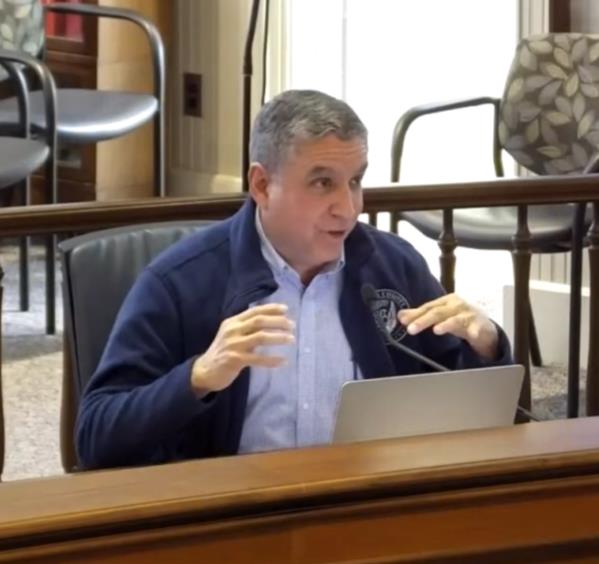
“The exterior has friable asbestos in the stucco,” Arel LeMaro, Tompkins County Facilities Director, advised the Downtown Facilities Special Committee November 4, the committee chaired by Newfield-Enfield’s Brown, the lawmaker who brought the deconstruction measure to the full Legislature Thursday.
The stucco’s been crumbling off Building C for years. But until a recent engineering review, nobody knew it contained asbestos. Because of that newfound danger, scaffolds must be erected, plastic tents put in place, monitors installed, and special removal procedures employed.
Largely because of Building C’s precautions, LeMaro and lead architect Quay Thompson estimated Tuesday that “abatement” expenses would contribute $1.3 Million toward the projected $2.5 Million cost to deconstruct all three buildings.
And no, LeMaro said, Tompkins County cannot stretch the rules as a private developer did earlier this decade when it tore down another asbestos-laden building, the Old County Library. It did so while still keeping “asbestos in place.”
The Old Library was supposedly different, LeMaro explained. The housing developer that bought the building secured a variance, perhaps on questionable grounds, maintaining that the library’s roof was falling in and that the building should be condemned. “These buildings are not condemnable,” Facilities Director LeMaro pointed out with the Buffalo and Tioga Street trio. Grounds for condemnation just don’t exist, he said.
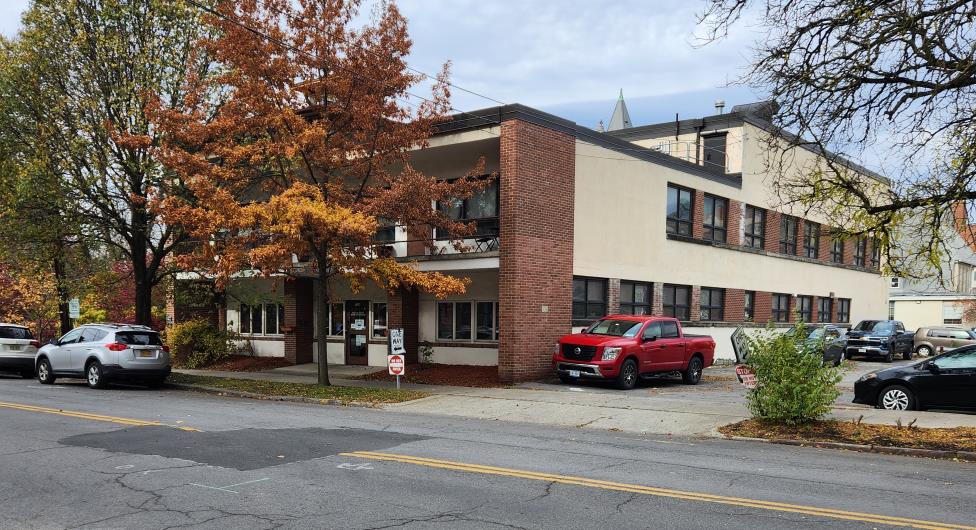
But not only is deconstruction costly, it takes time. Thompson estimated that taking pains to salvage usable materials along with all the abatements could consume a full eight months.
But if the asbestos abatement costs can’t be avoided, could other expenses be shaved? Might Tompkins County save money by not salvaging anything; by simply carting all debris to the landfill?
“I can’t help but wonder something that is so long and protracted a process, requires an on-site supervisor… and we’re not even sure there’s a market for a majority of the materials,” legislator Deborah Dawson asked Thompson and LeMaro, “why are we doing this?”
The rationale is community pressure. Preservationists welcome, well, preservation. And County leaders bowed to preservationists early-on. They did so in part to lessen community objections to taking the buildings down. And as much as Dawson might think differently, others are reluctant to budge.
“We just saw the East Wing of the White House demolished in a very few days. It shocked the country,” Dryden’s Mike Lane reminded the committee. “And so I think as we go forward, we’ve got to think about how people will react if we just go in and push it down.”
Dawson saw an opening. Midway through Lane’s admonition about East Wing razing, she interjected, “You think we could get those guys?”
At the Legislature, Randy Brown described the Election Day meeting of the Downtown Facilities Committee as “the longest meeting to date.” From the public’s perspective, that can’t be said. The Tuesday session’s public portion ran only 45 minutes.. Meetings of the committee have run longer. It suggests that the executive session of the committee Brown called that day was the long part, perhaps rivaling in its length the later discussion Brown had requested of the full Legislature.
“I think maybe the discussion in executive session provides some broader context,” Groton’s Lee Shurtleff said, albeit hesitantly, in inviting closed doors. “But you know, it’s not typically something to come out of executive session and take action or vote,” Shurtleff advised.
Customary or not, that’s what the Legislature did.
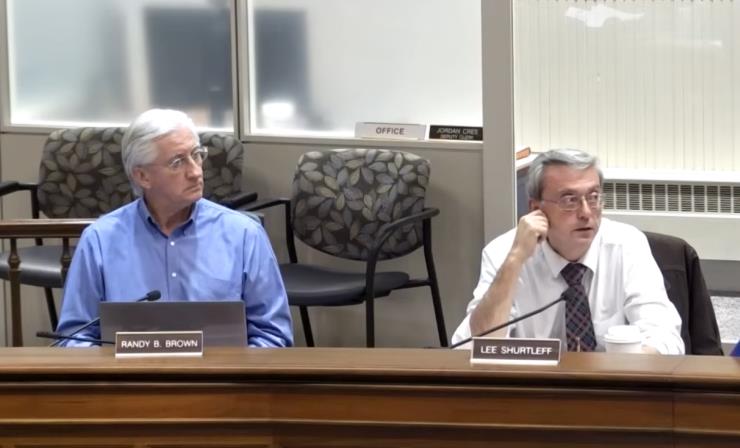
“I would prefer to do it right now,” Legislature Chair Dan Klein stated his preference for immediacy, Klein apparently seeing no need for a closed-door huddle prior to a vote on deconstruction funding. Mike Lane agreed with Klein.
Yet Randy Brown prevailed. And Klein bowed to Brown’s wishes. After finishing other business, the Legislature shuttered its doors—and its video stream—and employed the “real estate exception” to New York’s Open Meetings Law. The exception allows private consideration of the “proposed acquisition, sale or lease of real property,” when publicity would potentially affect the property’s value.
To lean upon that clause to address only the razing of buildings government already owns could stretch state law beyond its breaking point. But were the Legislature to also weigh abandonment of the Center of Government project altogether in favor of other options, such as purchase of available buildings in the Cornell Business Park or the more recent offer by owners of Harold’s Square to sell or lease vacant office space in the high rise they own on the Commons, the leap to justify comes easy.
We, the public, may never know, of course, what was discussed. Legislators sequestered themselves behind locked doors at about 9:20 Thursday night. They reconvened at about Eleven. They took their vote, and then they went home.
Yes, it would have been nice had on this important a matter—an eight-figure investment whose costs keeps climbing, and climbing fast—that a public body whose members we elect to do our bidding had conducted their public business in public.

But that’s not been how the Center of Government has tended to be handled. And that secrecy dates back to when former County Administrator Molino and legislative leaders kept their efforts to buy the Key Bank and law office buildings sheltered in silence for years. Those in the world of real estate likely knew what was going on. But we in the public couldn’t be told.
So, for now, we must rely on the cautionary words spoken in committee by legislator Shawna Black, a Center of Government supporter, but one who’s wary of public and colleague jitters.
“I’m afraid that the higher we get and the more expensive this project gets, the more likely we are to lose legislators that are behind the project,” Black told the Downtown Facilities Committee Tuesday. “And I think probably we could be at the tipping point of legislators that are ready to not support this project,” she warned.
And to colleague Dawson’s estimate of a 30 million dollar cost increase over this past half-decade, Black opined:
“So we’ve doubled the project in the past eight years that I’ve been on the Legislature. I understand the fact that if we don’t do it soon it’s going to keep doubling. But I feel like this is a runaway train at this point,”
Again, Black spoke at a committee meeting; not on the floor of the full Legislature on the night it voted to spend $2.6 Million of your money not really to build anything up, but instead to rip something down. Candor and transparency are nice, at least when you can find them.
###

